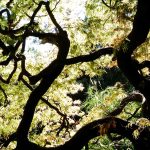Prune Trees to Reduce Fire Risk
Thousands of fires burn in Oregon every year. Firefighters responded to more than 15,000 fires in 2015, according to a report by the state’s Fire Marshal. Many of those blazes damaged homes, businesses and other types of buildings.
How can you protect your property from fire, especially wildfires? One way is to trim overgrown trees and shrubs. Trimming and prune trees to reduce fire risk by removing material that fuels the flames.
You should also keep the other plants in your yard trimmed and watered. Dry grass and leaves allow a fire to spread faster. It’s also important to remove dead and diseased trees.
Remove Fuel for a Fire
The best way to reduce the risk of a fire is to remove materials that burn easily. This includes such things as trash, firewood, propane tanks, dead trees and overgrown branches.
Keep the area near your home safer with the following lawn and tree care tips:
- Prune trees to remove branches near the ground, about 6 feet up.
- Trim branches that hang over the house.
- Reduce overcrowding. Conifer trees should have lots of space. Remove trees if they have become too crowded or are too big for the yard.
- Remove dead plants. Grind tree stumps and pull weeds that are growing near the deck.
- Mow the lawn. Tall, dry grass is extremely flammable.
- Water your lawn, garden and trees. Don’t let your landscape get too dry.
- Trim plants nearest your home. Choose varieties that grow low to the ground and have a lot of moisture.
Choose Fire-Resistant Trees and Plants
Some types of trees and plants burn more easily than others. You can reduce the risk of fire by choosing plants that resist fire. These varieties aren’t fireproof. They will still burn, but they won’t burn as quickly.
Plant these types of trees and plants near your home:
- Deciduous trees and shrubs: Most species of deciduous trees and shrubs resist burning. Deciduous plants are those that lose their leaves each fall.
- Plants with soft, moist leaves.
- Trees with low sap or oil.
Keep these trees and plants farther away:
- Trees and plants with fine materials that tend to dry out. These include species with needles and twigs.
- Avoid trees that contain aromatic oils. You can smell an aromatic oil when you crush the leaves or twigs of the tree.
- Trees and plants with sticky sap.
If you own acreage with trees, keep your trees well spaced and trimmed. Remove small conifer trees that grow between larger ones. You can create breaks in the landscape to slow a fire. These include driveways, gravel paths and green lawns.
Call Inexpensive Tree Care For Expert Pruning
Our experts can help you evaluate your trees. We’ll prune, trim or remove trees that pose a fire risk. Contact us today for an estimate.




